This article explores the essential role of office chair casters and wheels in enhancing workspace functionality. It delves into various caster types and materials, offering practical advice on choosing the right one based on floor type, mobility needs, and weight capacity. The guide also covers maintenance and troubleshooting tips to extend caster life. Additionally, it provides insights into selecting ergonomic office chairs with the best casters for 2025, ensuring smoother movement and improved workspace comfort.
If you’re upgrading your office setup or purchasing a new chair, one aspect that often gets overlooked is the chair’s casters and wheels. These small components make a huge difference in how comfortable and functional your workspace can be. After all, what good is an ergonomic office chair if it’s a hassle to move around—or worse, if it keeps sliding on hardwood floors?
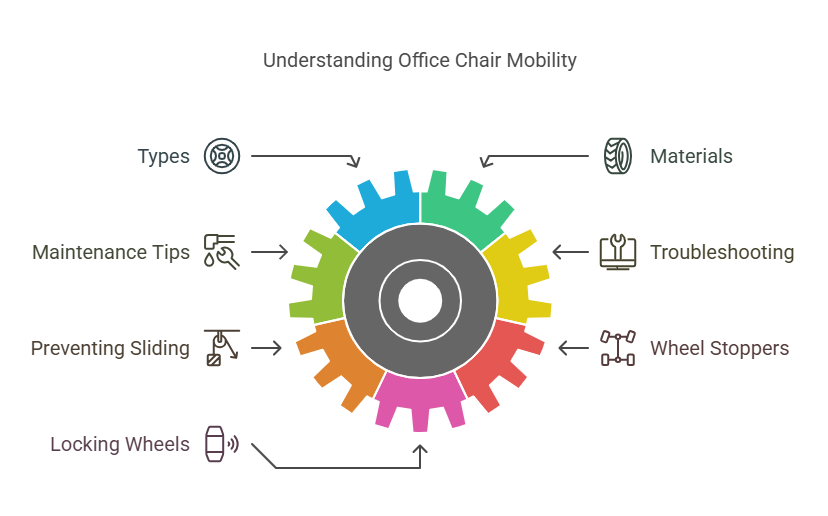
In this guide, we'll dive into everything you need to know about office chair casters and wheels—from their types and materials to maintenance tips, troubleshooting, how to keep chairs from sliding on hardwood floors, when to use an office chair wheel stopper, and what to look for in a desk chair with locking wheels.
Types of Office Chair Casters: Which One is Right for You?
Choosing the right casters for your office chair isn’t just about looks—it’s about functionality ⚙️ and compatibility with your floor type. The type of caster you need will affect how easy it is to move your chair around and how long your flooring stays intact. Let’s take a look at the most common types:
1. Hard Casters
🛡️ Typically made from hard plastic or sturdy materials.
✔️ Best for: Hardwood floors, tile, or smooth surfaces.
🔄 Key Benefit: Smooth rolling on non-carpeted surfaces (may scratch floors if misused).
2. Soft Casters
🧶 Made from rubber or polyurethane.
✔️ Best for: Carpeted floors (especially thick carpets).
🛡️ Key Benefit: Protects carpets from damage (less effective on smooth surfaces).
3. Locking Casters
For those times when you don’t want your chair moving—say, when you’re sitting still for a meeting or using your chair with a desk like the ergonomic office desk chairs —locking casters can be a game-changer. These casters lock into place when you’re not actively rolling the chair, preventing unwanted movements.
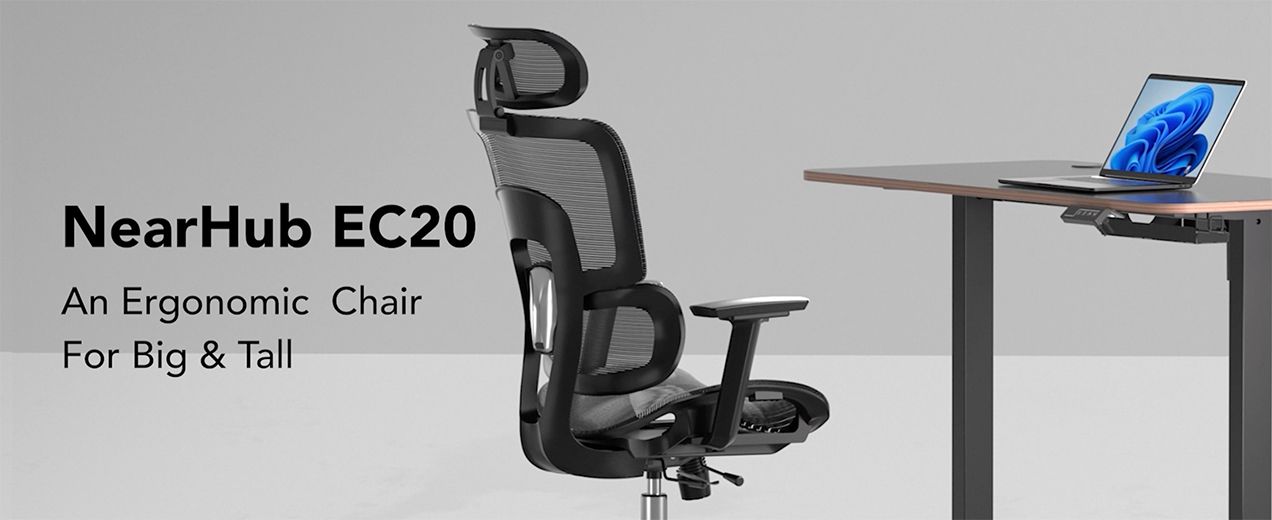
Key Benefit: Adds extra stability to prevent the chair from rolling unexpectedly.
4. Swivel Casters
Swivel casters are designed to rotate 360 degrees, allowing for maximum mobility and flexibility. These casters allow you to move your chair in any direction without having to lift or drag it, making it perfect for flexible office setups. Whether you’re working in an office or your home workspace, a swivel base for chair ensures smooth maneuvering without restriction.
Key Benefit: Ideal for those who need full mobility in all directions, especially in tight office spaces or desks with adjustable heights, like the NearHub EC 10: office chair short back
How to Choose the Right Office Chair Casters for Your Floor Type
When selecting office chair wheels, one of the first things to consider is the type of flooring in your workspace. This can dramatically affect the performance of your casters.
1. For Hardwood and Tile Floors
If you have hardwood or tile floors, you’ll want hard casters. These types of wheels glide smoothly over these surfaces without dragging debris or causing friction. However, it’s important to ensure that your wheels are properly maintained to avoid any unintended scratching on the floors.
Tip: If you’re concerned about scratches, consider using a protective mat under your chair, especially if you have an office chair base that’s prone to causing damage.
2. For Carpeted Floors
If your office is covered with carpet, especially thicker carpeting, soft casters are the way to go. They allow the chair to move freely while also being gentler on the carpet, preventing damage and snagging.
Tip: For extra protection, opt for rubber casters, which are quieter and better at absorbing impact when rolling over carpet.
If you have a height adjustable electric sit stand desk, you may need to pay extra attention to the height of your casters, especially if you plan to frequently adjust the height of your desk.
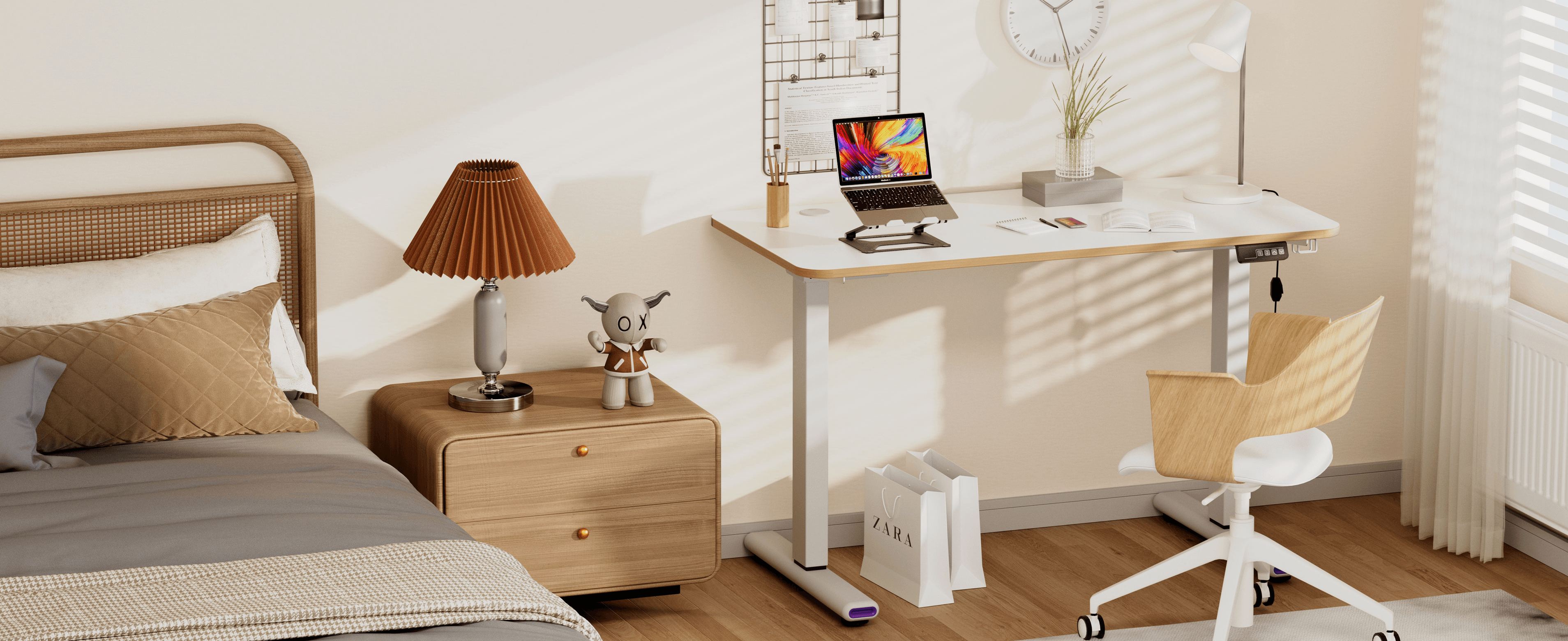
Factors That Affect Office Chair Caster Quality
When selecting casters, keep these factors in mind to ensure you’re getting a quality product that will stand the test of time.
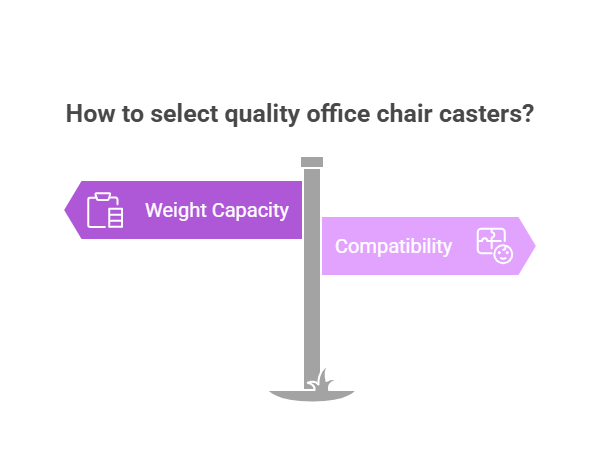
1. Weight Capacity
Not all office chair casters are created equal. Some casters are designed to handle specific weight limits. If you’re buying a chair for a heavier individual, ensure that the casters can support the weight without becoming unstable. Larger, heavier office chairs with an ergonomic desk chair base may require casters built for durability.
Tip: Always check the manufacturer’s guidelines to make sure your casters are rated for the weight capacity of your chair.
2. Compatibility with Chair Base
Not all casters will fit all chairs. When replacing or upgrading your casters, make sure the new ones are compatible with the chair base. Some chairs have a unique stem or mounting system that might require specialized casters.
Tip: Universal casters can fit most chair models, but always double-check the specifications to be sure.
Maintaining Your Office Chair Casters and Wheels
🛠️ Office Chair Caster Maintenance Tips
To maximize performance and longevity, follow these simple steps:
🧹 Clean the Casters Regularly
Dust and debris can jam wheels. Use a damp cloth or vacuum attachment to clear buildup.
💡 Pro Tip: Monthly cleaning prevents sticking and extends lifespan.⛽ Lubricate the Wheels
Squeaky or stiff wheels? Apply a small amount of lubricant (e.g., WD-40) and rotate to distribute.
💡 Pro Tip: Lubricate every 3 months for smooth, quiet rolling.
Should You Replace Your Office Chair Casters?
Even with proper care, office chair casters can wear out over time. If your casters are damaged, cracked, or not rolling smoothly anymore, it’s time for a replacement. The good news is, casters are generally easy to replace and can significantly improve the functionality of your chair.
Here’s what to look for when replacing casters:
- Check the stem size to ensure compatibility.
- Consider upgrading to a higher-quality caster if you’re finding your current ones are not performing well.
- Replace all four casters at the same time to maintain balance.
Best Office Chairs with Casters for 2025
Looking for a new office chair with premium casters? Here are a few of our top recommendations for 2025:
1. NearHub EC10: Ergonomic Office Chair for Small Frames
Designed for those with smaller frames, this chair offers comfortable seating and smooth rolling casters that work well on both carpet and hard floors. The ergonomic design ensures great lumbar support for long hours of sitting.
2. NearHub EC20: Ergonomic Desk Chair for Big and Tall
This chair is built with a sturdy office chair base and durable casters designed for larger individuals. It provides excellent support while allowing easy mobility across various floor types.
3. NearHub OD20: Height Adjustable Electric Sit-Stand Desk
Pair this adjustable desk with a comfortable ergonomic chair for a flexible, productive workspace. The smooth casters and adjustable height make it an ideal choice for anyone looking for mobility and versatility.
4. NearHub TC30: Mobile TV Stand on Wheels for 26-70 Screens
If you want a TV with rolling stand, NearHub TC30 is another excellent option for mobility in your office or home. With smooth-rolling casters, you can easily adjust the position of your TV setup.
FAQs
1. What is the difference between office chair casters and wheels?
Casters refer to the full assembly, including the wheel, stem, and mounting hardware. Wheels are the part that actually touches the floor, allowing your chair to roll.
2. Can I use my office chair on carpet with hard casters?
While hard casters can work on low-pile carpets, they’re generally not recommended for plush, thick carpeting as they can damage the carpet fibers. Soft casters are a better option for high-pile carpet.
3. How do I replace office chair casters?
Replacing office chair casters is typically a simple process. Just remove the old casters by pulling them out of the chair base, and insert the new ones into the slots. Make sure the new casters are compatible with your chair’s base.
4. How often should I clean my office chair casters?
It’s a good idea to clean your office chair casters every month to remove dirt, dust, and debris. Regular cleaning will keep your casters in top condition and prevent build-up that could affect performance.
5. Can I use locking casters on all types of flooring?
Locking casters can be used on both hard and carpeted floors, but their main function is to prevent unwanted movement when the chair is not in use. Ensure your flooring type is compatible with the locking mechanism for best results.
Conclusion
Choosing the right office chair casters might seem like a small detail, but it can make a huge difference in the overall comfort and functionality of your workspace. By considering the type of flooring in your office and selecting the right casters, you can ensure your chair moves smoothly, is easy to use, and keeps your workspace tidy and organized.
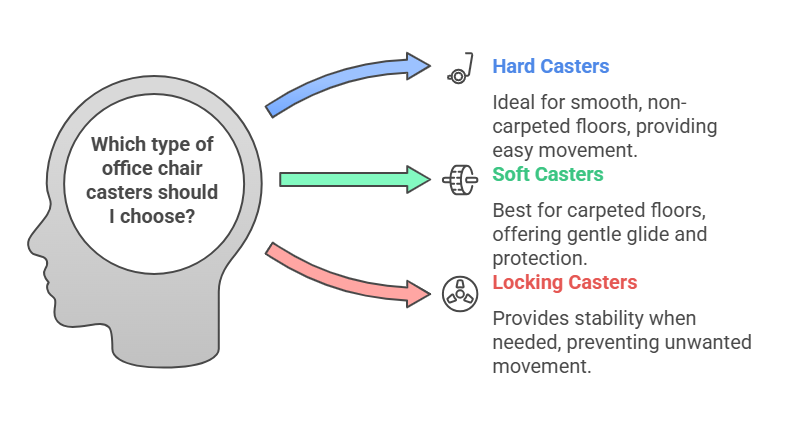
Whether you opt for hard casters, soft casters, or locking casters, don’t overlook the importance of quality chair wheels in your office setup. A little investment in the right casters can make a big difference in your productivity and comfort.
Happy rolling!













































